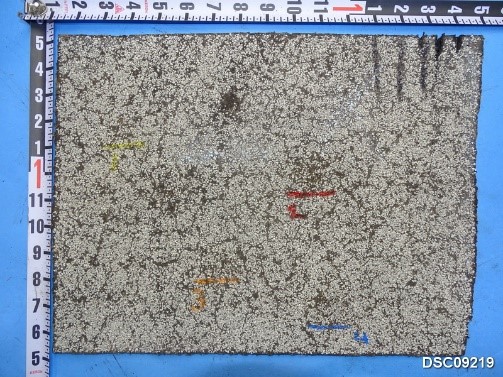Desaturation Testing of Modified Bitumen Roofing Membrane
Manufacturing facility with several large buildings covered with granule surfaced modified bitumen (mod-bit) roofing membranes. Concerns were raised regarding hail-caused damage to the roofs. The mod-bit roofs varied in age and had numerous regions where granules were missing that were presented as examples of hail-caused damage. Our client needed to know if the roofs had been damaged by hail.
Mod-bit roofing samples and their substrates were removed and tested in the HRT laboratory to determine if regions of missing granules were caused by hailstone impacts and to determine if the roofing samples had been damaged by hail. Samples were visually and tactilely examined by laboratory personnel and then samples were processed via hot solvent desaturation, which removes the bitumen and surfacing, allowing the reinforcements to be closely examined for ruptures or strains consistent with hail impact forces.


Prior to desaturation, the samples and substrate taken from the roof were mounted to a panel and impact tested with various sizes of ice balls. Ice balls were frozen solid and propelled perpendicular to the test panel at free-fall velocities of similar sizes of hail to replicate worst-case impact conditions.


After impact testing, reinforcements were examined at the area of interest (See Figure 2) for conditions related to hailstone impact. The reinforcements were intact. Additionally, the area of interest was visually dissimilar to areas impacted by simulated hailstones.

Regions of the reinforcements subjected to simulated hailstone impacts were also examined after desaturation. It was determined that frozen solid hailstones of about 1-3/4 inches in diameter or larger could bruise the mod-bit roofing, which was a condition not detected in the field or during laboratory examination.




